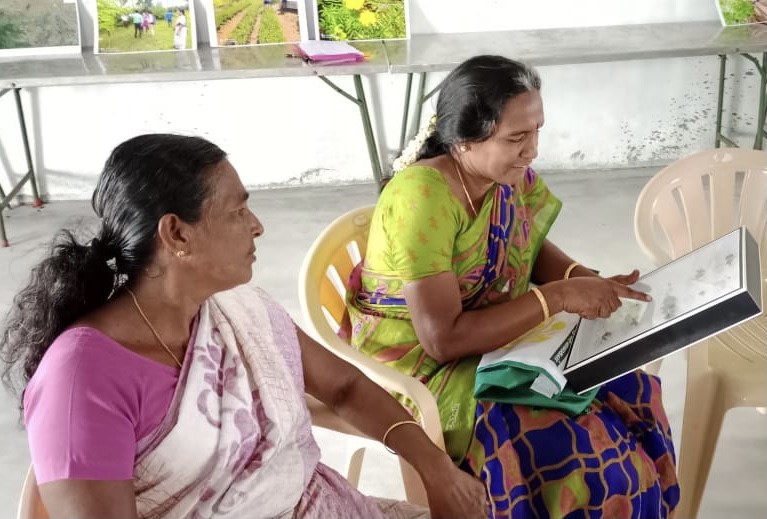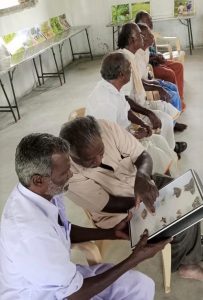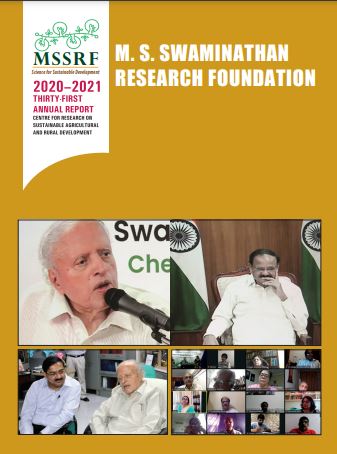Result-sharing workshop between researchers and Moringa farmers at Kannivadi, Dindigul Dt from project TROPICAL
Small farmers from Dindigul, Karur and Coimbatore districts in Tamil Nadu are increasingly cultivating Moringa (Moringa oleifera) as it requires less water and is barely affected by the changes in rainfall. It is a highly cross-pollinated crop, significantly reliant on insects to pollinate it. However, only a few farmers are aware of insect pollinators and its role in improving moringa pod quality and productivity. Due to this, insect pollinators received little attention, and farmers used pesticides to manage pests, resulting in habitat loss.
Researchers at the University of Reading have successfully enhanced apple yield by increasing pollinator abundance and diversity while using attractant crops as inter and border crops. Under translational research, the same principle was piloted on Moringa in the Kannivadi region, Dindigul Dt, Tamil Nadu by M S Swaminathan Research Foundation (MSSRF), Reddiyarchatram Seed Grower Association (RSGA), and University of Reading (UoR), UK.


Intervention process involved the following:
- Moringa farmers learnt about pollination, the function of insect pollinators in Moringa, and the significance of floral diversity in attracting pollinators.
- Ten different species that attract pollinators were shortlisted based on the farmer’s observations in the local region.
- Brainstormed the positive and negative factors of such attractant species and a matrix was developed.
- Marigold (Tagetes erecta)and perennial Redgram (Cajanus cajan) were selected as suitable inter and border crops, respectively, in Moringa to test the effect on flower visitors and pollination services.
- Twelve paired field experiments were conducted, in which 20 men and four women participated.
- In each pair, one was an intervention site with floral enhancement crops planted as inter and border crops, and the other was a control site without any floral interventions.
- As a border crop, the red gram was planted in two rows, and two rows of marigolds were planted as intercrop.
- The experiment was conducted in two seasons with farmer participation, and the observed data were analysed.
Results from the efforts were that floral visits were higher in the intervention fields than in the control fields. Also, the number of pod sets increased by 15 per cent, and the quality of the pods in Moringa such as fruit length, fruit girth, and the number of seeds viz., 15, 10 and 10 per cent was more in the intervention fields. Around 30 different insect pollinator species were observed, with bees dominating floral visits.
Participant-farmer observations
Mrs J. Vasantha Mary (Intervention farmer): Comparatively, more honey bees and carpenter bees visited my field during the intervention, and more fruits were produced, so I adapted the marigold intervention throughout all my Moringa fields. Apart from attracting pollinators, I also sell the marigold in the local market, which gives me an extra income.
Mrs T. Kohila (Intervention farmer): I observed a higher yield and better pod quality in my field. And after the intervention, I am still maintaining the red gram as a border crop, and I have decided to plant marigolds in the upcoming Kharif season.
Mr Selvamani (Intervention farmer): In my field, I have observed increased fruit quality and fruit set during the intervention, as well as an increase in insect activity.
Mr Jesuraj (Control farmer): My pair intervention farmer’s field was comparatively healthy and more profitable. So, I adopted the interventions after the project was over.
The farmers also shared their knowledge on pollinator attractant plants and weed plants. They mentioned that sunflower, cucumber, sesame, thumbai (common leucas), mookirattai (redspiderling), and nerinji (Tribuls sp.) are other good pollinator attractant plants.

